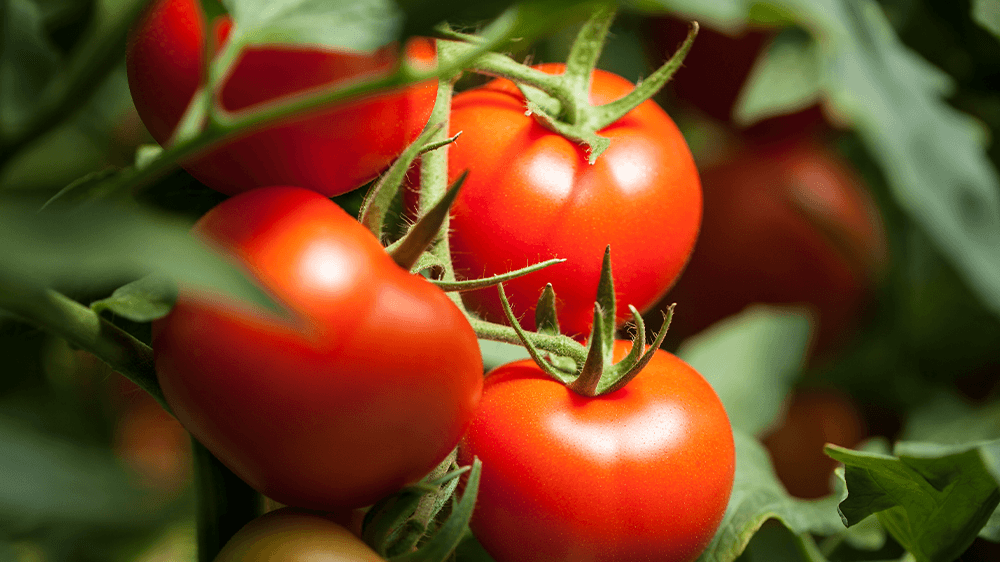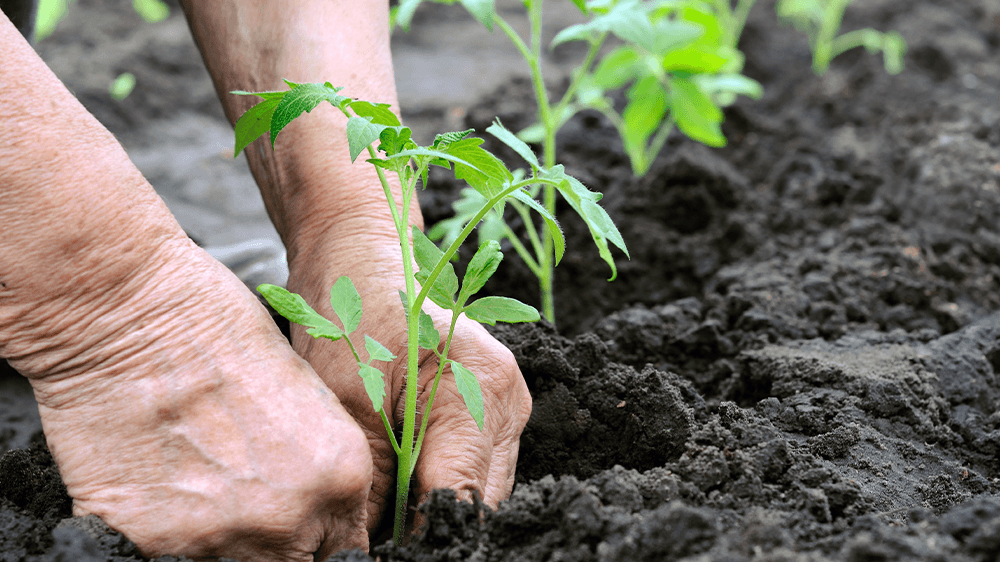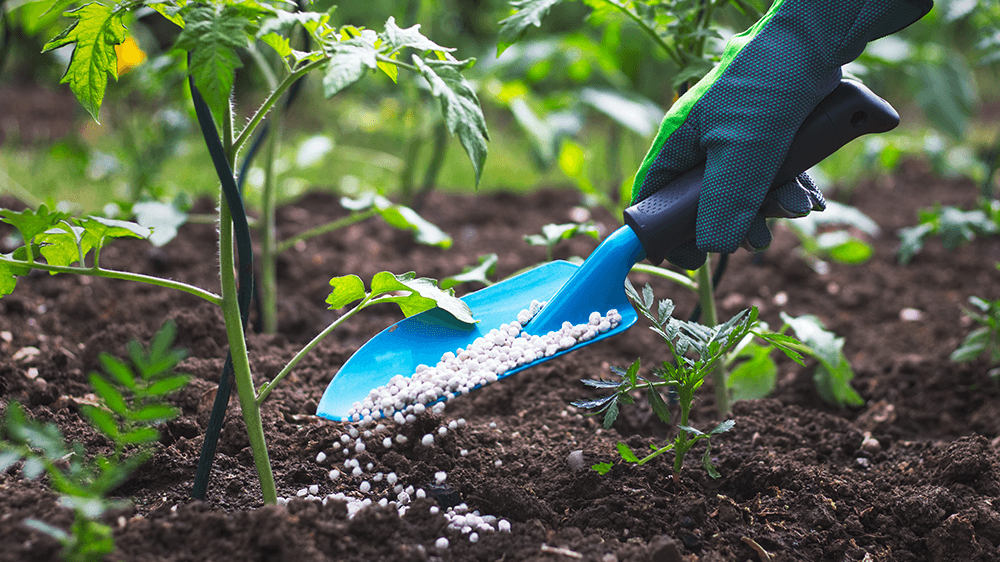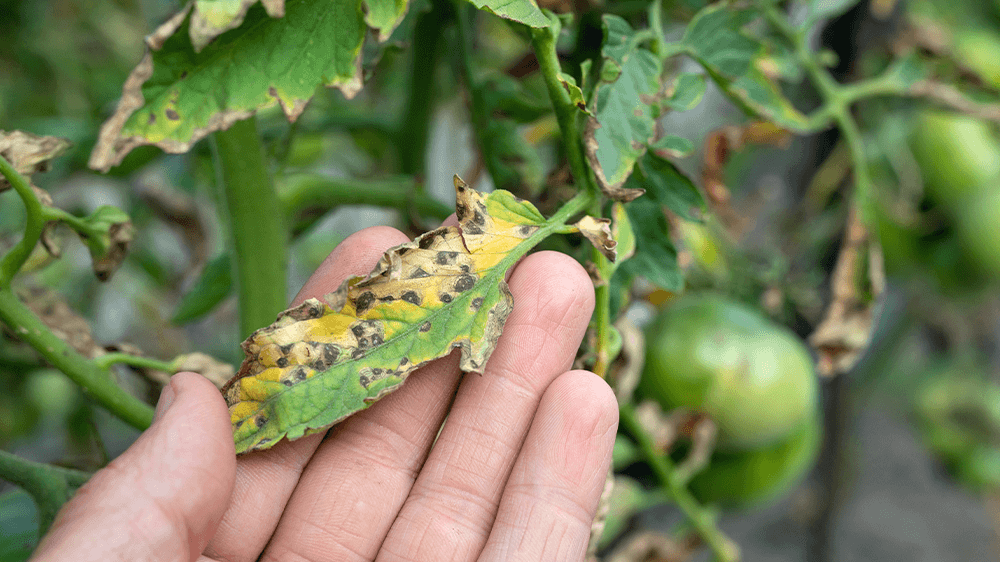If you’re growing a vegetable garden, tomatoes are an essential. Any seasoned gardener will agree that this vigorous plant is worth the effort. Under the right conditions, your tomatoes will provide you with a huge harvest of delicious, versatile fruits to use in countless recipes. Your spaghetti sauces, Caprese salads, and homemade salsa will never be the same!
How to Grow Tomatoes in a Garden
Tomatoes aren’t high-maintenance, but they grow fast and require lots of nutrients to produce high volumes of fruit. Maintaining a regular care schedule is key—if you’re inconsistent with watering, the fruits may split. Once you nail the basics of growing tomatoes, it’s easy—just remember to stay consistent!

The Best Tomato Plants to Grow
Tomato plants fall into two main categories: determinate and indeterminate.
Determinate tomatoes are bushy and compact. Their fruit ripens all at once within about a two-week span. They don’t require staking and can be easily grown in containers. The Roma is great example of a determinate tomato.
Indeterminate tomatoes keep growing throughout the summer and into fall, continually producing fruit until the temperature drops. Supports like stakes, tomato cages, or trellises will help keep your plants upright. These varieties are popular because they provide a food source over a longer span, instead of one giant harvest all at once. Examples: Big Boys, Brandywine, San Marzano, etc.
There are thousands of tomato varieties with different shapes, textures, and flavors. Disease-resistant varieties—like Sungold or Early Girl—are worth planting if you’re a beginner because some tomato diseases, such as Verticillium or Fusarium wilt, can’t be killed with fungicide. If you plant disease-resistant varieties, your chances of success will increase!

Planting Tomatoes
Growing tomatoes outdoors is easiest in containers and raised garden beds because the soil is loose and easy to amend with compost and fertilizers. Pick a spot that gets 6–8 hours of direct sunlight daily. Leave 18–24 inches of space between your plants; this prevents overcrowding, which can stunt growth or encourage powdery mildew from poor air circulation.
When you dig the hole for your plants, try to make it about the same depth as your plant’s root ball. Avoid piling up soil around the base of the plant, as this can cause the stem to rot. Water your plants generously after planting.
Watering Your Tomatoes
Water your plants in the early morning while the soil is still cool. Don’t let the soil dry out—try to keep it consistently moist without totally drenching the soil. During the hottest months of summer, you may need to water your plants every day. Applying a layer of mulch will help slow the evaporation of moisture.

Fertilizers
Customers often ask how to make tomato plants grow faster, and the secret is to apply fertilizer regularly throughout spring and summer. In fact, without any fertilizer, you might have a disappointing harvest. This is especially true for tomatoes growing in containers—the available nutrients are limited, so you need to top it up with fertilizer so that your plant doesn’t starve.
Organic and synthetic fertilizers are readily available, depending on your preference. All-purpose vegetable fertilizers will work fine, but there are also formulas intended specifically for tomato plants. Jobe’s Fertilizer Spikes for Tomatoes are great for beginners—all you have to do is stick a new one in the soil once per month. Some of our other favorite formulas include:
- Miracle-Gro Shake n’ Feed Tomato, Fruit, and Vegetable Plant Food
- Neptune’s Harvest Organic Fish Fertilizer
- Jack’s Classic Tomato Feed
- Espoma Garden-Tone Organic Herb and Vegetable Food
- Miracle-Gro Performance Organic Edibles

Troubleshooting Problems with Your Tomatoes
From pests to diseases, there are several things that could potentially thwart your tomato garden, but if you inspect your plants regularly, it will be easier to identify and treat the problems in their early stages! Watch for telltale signs such as:
- Holes in leaves
- Yellowing leaves
- Black or brown spots
- Dying foliage near the bottom of the plant
- Misshapen, rotting spots
Natural pesticides like insecticidal soap, neem oil spray, and diatomaceous earth are excellent natural options for killing pests without harming local wildlife. Copper fungicides work well for many common diseases. However, as mentioned before, some viruses can’t be killed with fungicides and can only be avoided through planting disease-resistant varieties or crop rotation.
If you’re having trouble identifying the issue with your tomato plants, feel free to ask our experts for some tips! We can help you find the right fix to save your plants before they’re defeated by pest damage or disease.

Find your starter tomatoes for sale at Alsip Nursery! Whether you want big, juicy slicing fruits for burgers and sandwiches, smooth and luscious Romas for sauces, or bite-sized grape tomatoes bursting with flavor, you’re bound to find something you’ll love here at the garden center.
